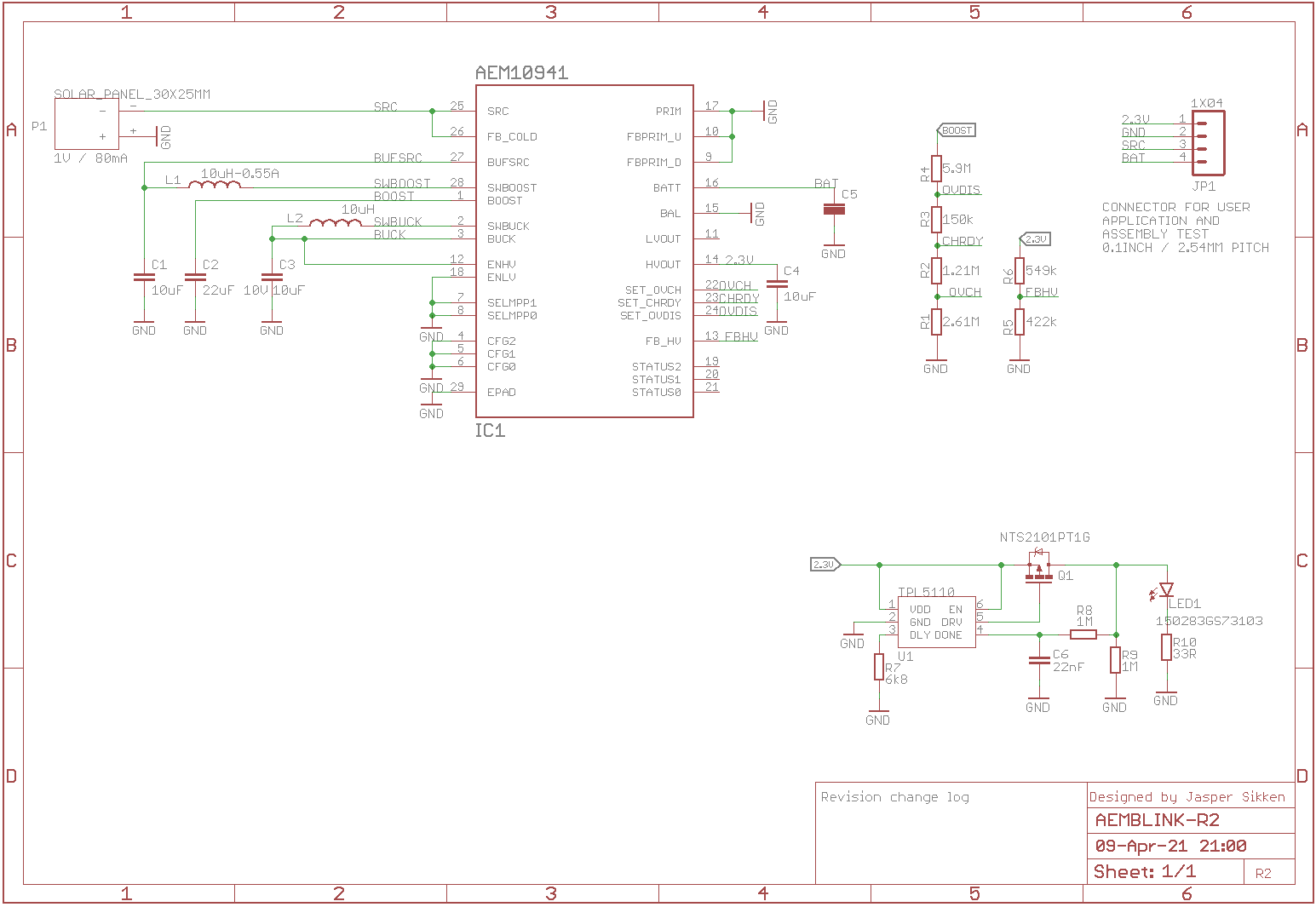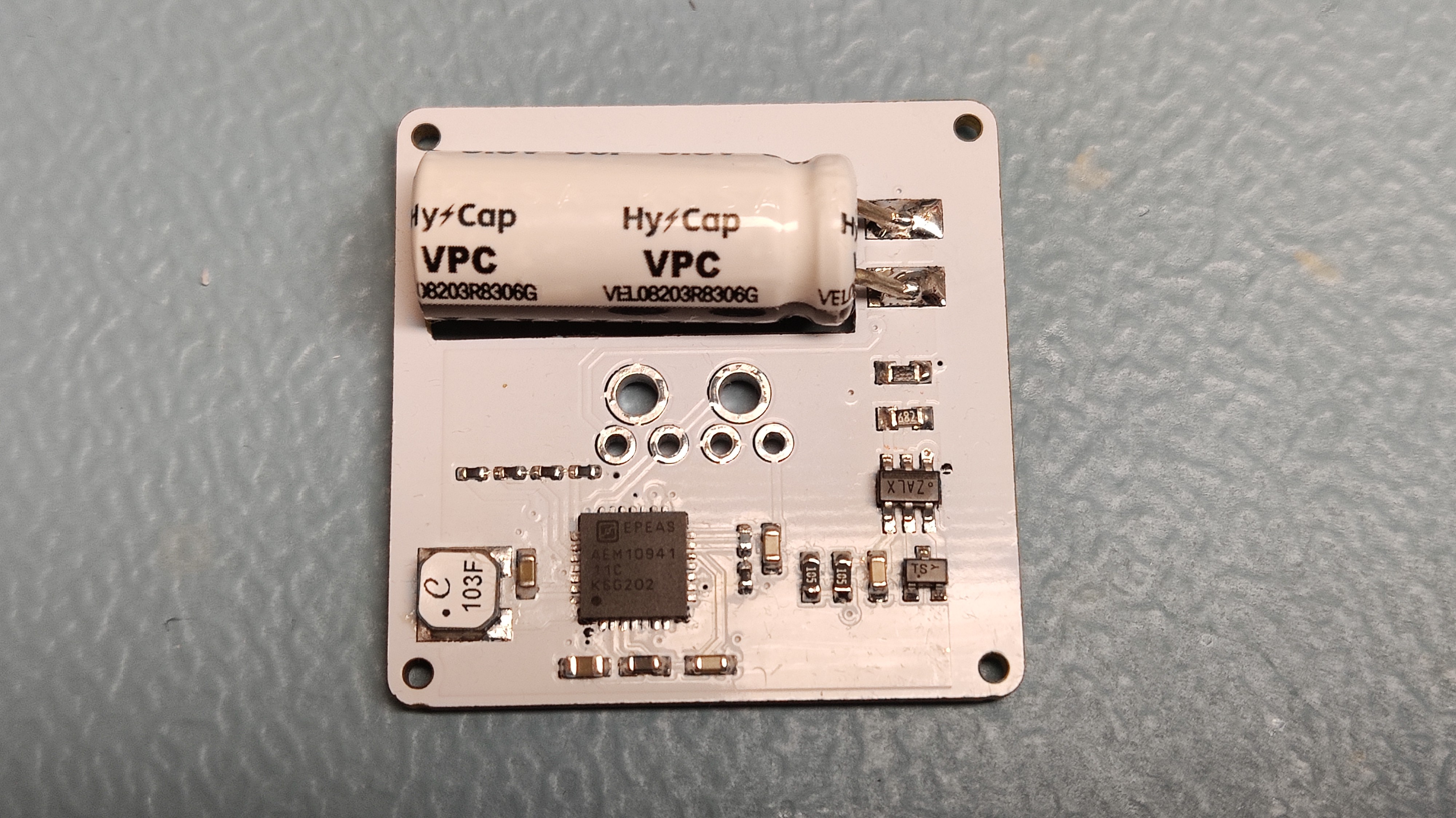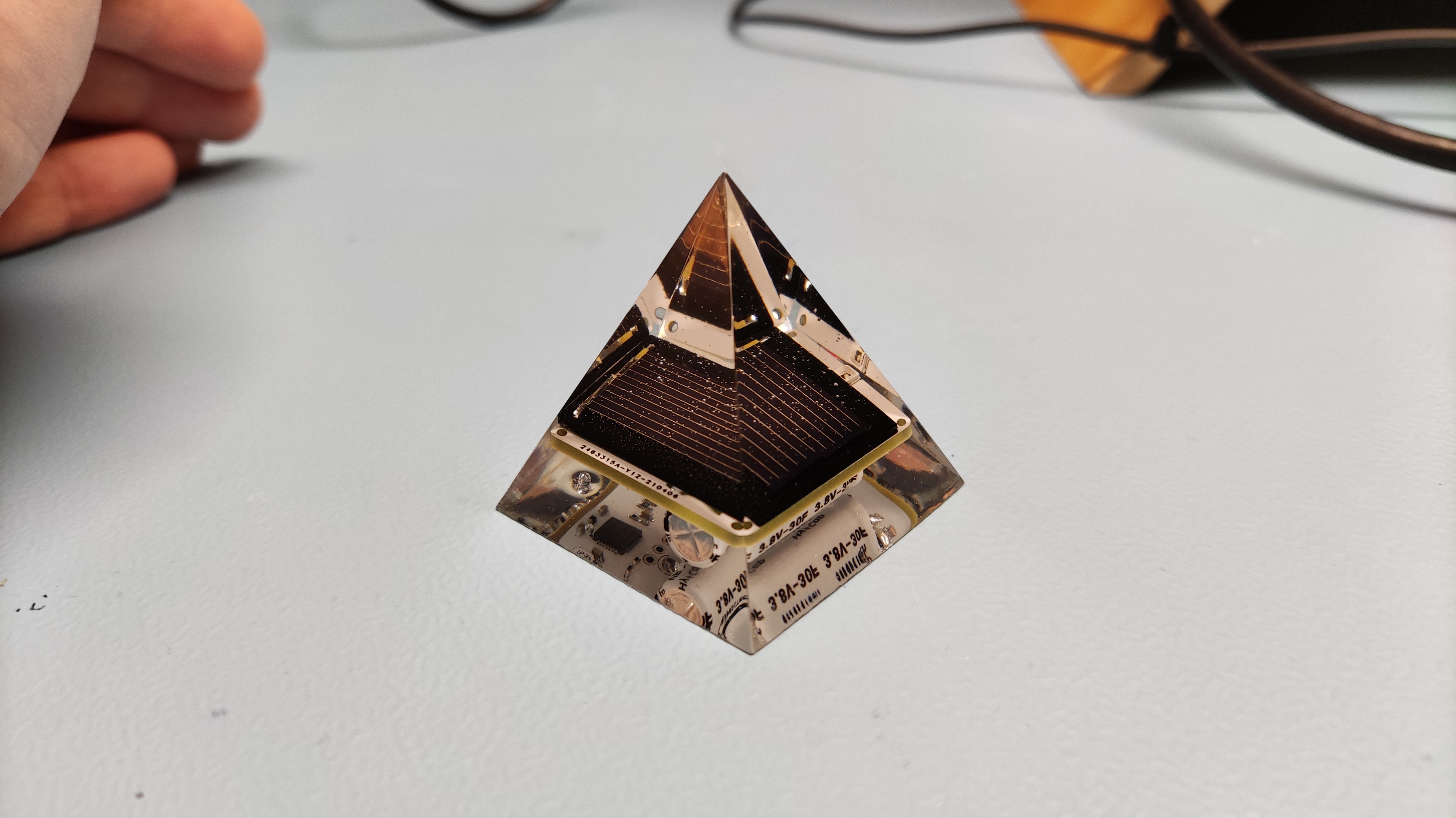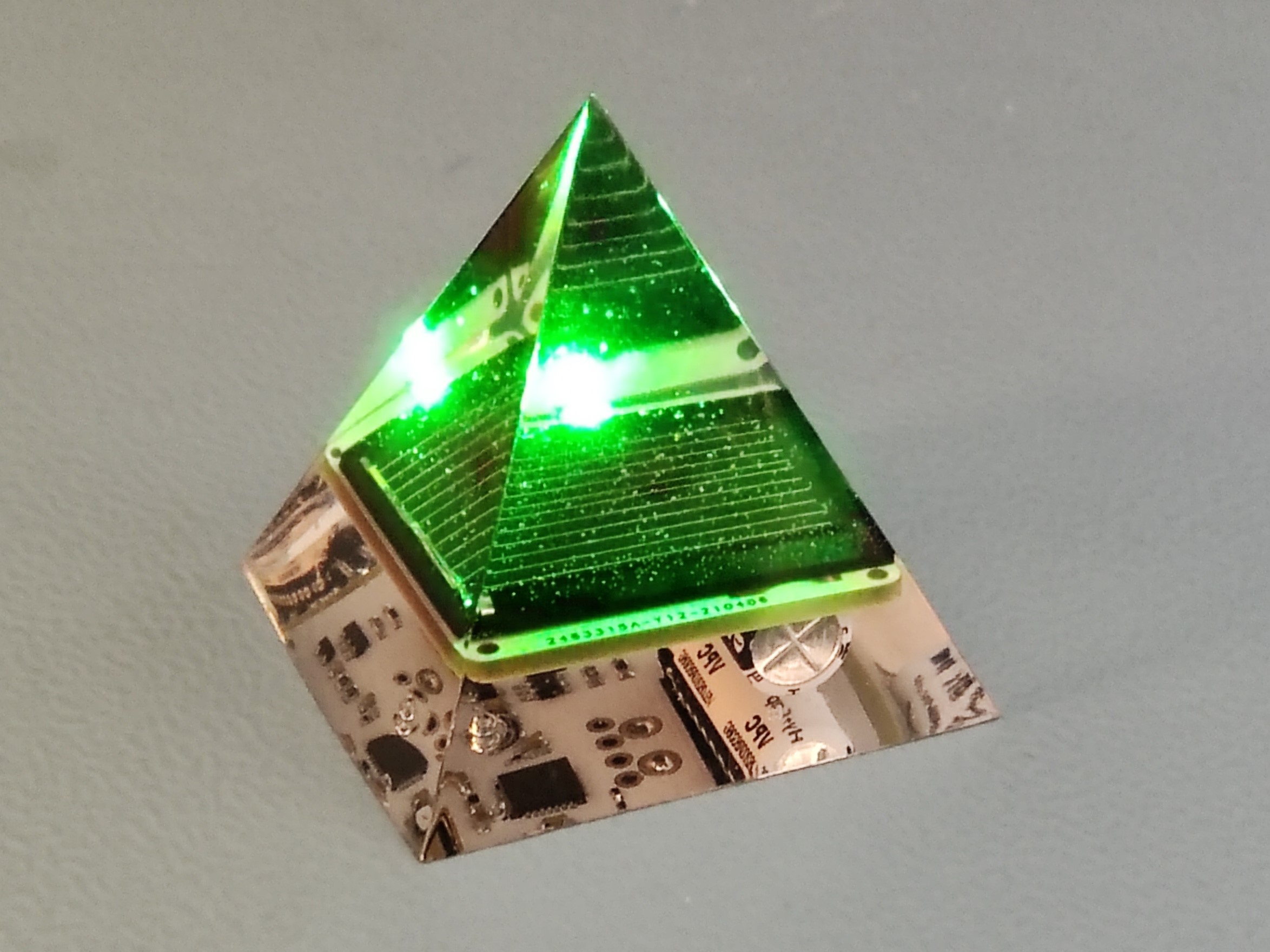So recently I found Lithium Ion Capacitors are a hybrid between Li-ion Battery (LIB) and supercapacitors (or EDLC) and combine best of both worlds. I also found LICs are nolonger expensive and available at large distributors. (I believe in new IoT designs LICs will replace many Li-Ion batteries and supercapacitors.) And recently I learned that green LEDs are much brighter than red or blue LEDs. So it was time to design a new solar harvesting blinky that stores it's energy into a LIC. I altered the old design from a supercapacitor to a LIC storage unit.
The LIC is 30F 3.8V and produced by Vinatech

The AEM10941 IC from E-peas is configured to charge the LIC up to 3.8V. The LDO is configured to 2.3V high enough for a green LED. The LDO is enabled when the LIC voltage exceeds 2.6V and disabled when the voltage fall below 2.5V.
For the LED I selected the Wuerth Elektronik 150283GS73103 because of it's very high luminous flux 40 lumen at 150mA. I used the same low power LED circuit as in the previous solar powered blinking pyramid, based on the Texas Instruments TPL5110. That flashes the LED for 15ms every 2000ms. The 15ms is long enough for the human eye to be perceived at maximum brightness and the 2000ms interval draws a lot attention while keeping the duty cycle and average energy consumption low. I measured the current and it is 18uA on average. The assembled board looks like this.

After assembly it blinks like this
The 25x30mm 1V/80mA solar panel charged the LIC at 20uA at 200 lux. So at indoor light levels it will blink forever. And with a fully charged LIC I calculated it will blink for 21 days in the darkness.
After that I put it in a silicone mold with epoxy resin. The resin was mixed gently to reduce the amount of bubbles, poured slowly so that bubbles easily surface. I did not vacuum the resin, but I did remove bubbles from the bottom using a wire, and popped surfacing bubbles using a gas lighter.
And then it looks like this

And when it blinks like this. As you can see there are still bubbles, but that's OK because they also nicely disperse the light

On video it looks like this
I am really happy with the design, but it takes a lot of time to assemble, so I usually make less than 10 pieces and give it away as a gift for friends and family. I do not want to sell them online.
 Jasper Sikken
Jasper Sikken
Discussions
Become a Hackaday.io Member
Create an account to leave a comment. Already have an account? Log In.
That is one of the coolest conversation starters I've seen. Great job!
Are you sure? yes | no